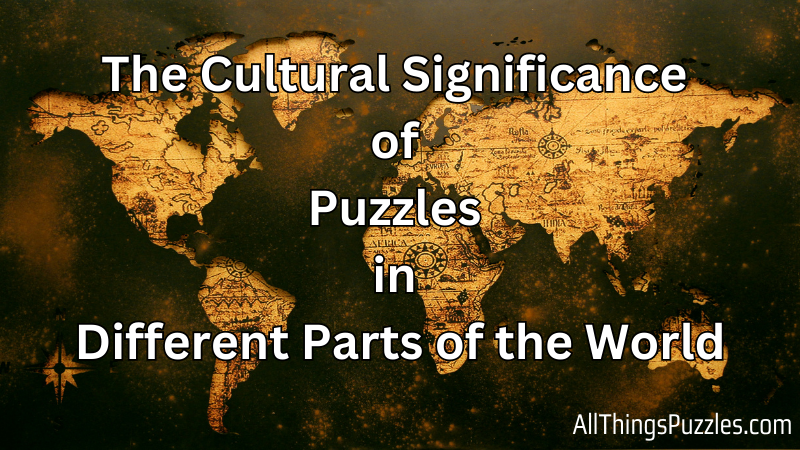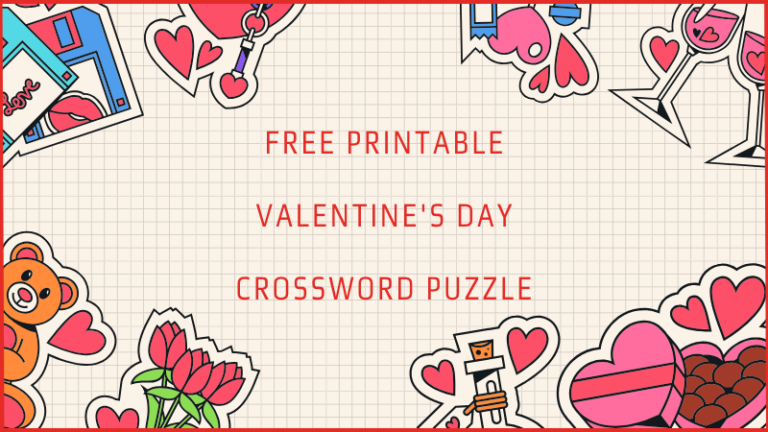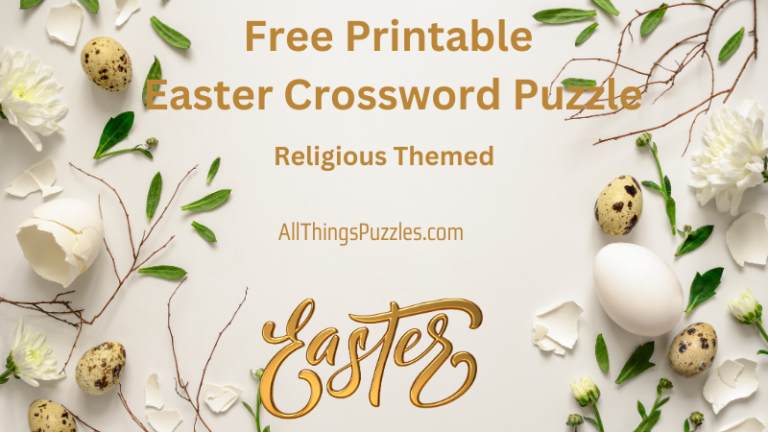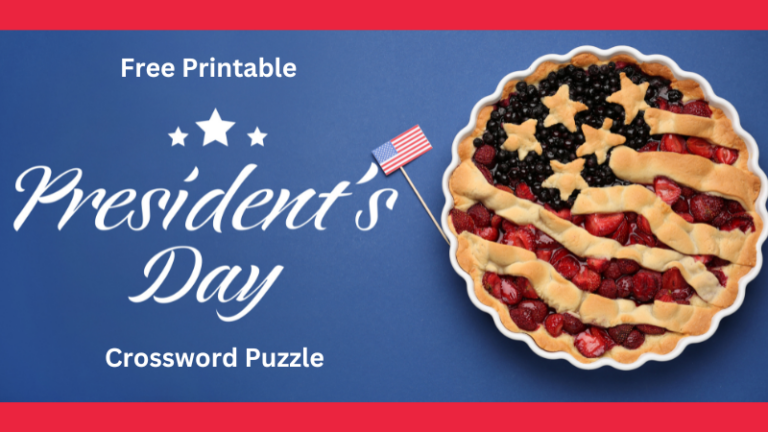Ah, crossword puzzles—the delightful brain teasers that have captivated millions of puzzle enthusiasts around the world. If you’re like me, you’ve probably spent countless hours engrossed in the satisfying challenge of unraveling those elusive clues. But have you ever wondered about the origins of these puzzling marvels? Join me as we embark on a fascinating journey through the history of crossword puzzles.
We will cover everything from their early forms to the emergence of modern crosswords. We will also explore how crossword puzzles gained popularity in the 1920s and 1930s and their place in popular culture today. Lastly, we will look toward the future and see what lies ahead for this beloved puzzle game. Get ready to uncover the secrets behind one of the most popular pastimes!
Key Takeaways:
- Crossword puzzles have a rich history that dates back to ancient word squares, gaining massive popularity with Wynne’s first modern puzzle in the New York World.
- The New York Times, once a skeptic of crosswords, embraced the trend during World War II, contributing to the puzzle’s status in popular culture.
- Crosswords have been more than mere word games; they’ve served as a comforting routine amidst turmoil and as educational tools, securing their place in history.
Crossword puzzles have intrigued and entertained people since their inception, engaging solvers in a mental dance of vocabulary and wit. This intersection of language and leisure has roots that extend deep into history, tracing back to the ancient Romans who played with word squares—a primitive relative to today’s crosswords.
Fast forward to the early 20th century, a significant milestone in crossword history occurred with the publication of the first crossword puzzle by journalist Arthur Wynne in the New York World newspaper. This diamond-shaped grid, then called ‘Fun’s Word-Cross Puzzle,’ quickly evolved from a typographical error into a beloved pastime.
The proliferation of crossword puzzles in American newspapers created an enduring cultural mainstay. They rose to prominence as a daily feature, becoming a staple in the lives of many, particularly during World War II. The puzzles served as more than just a simple diversion; they were a source of comfort and a mental escape from the daily work.
The New York Times, the only major metropolitan newspaper that initially dismissed crossword puzzles as a ‘sinful waste’ and an ‘utterly futile finding of words’, eventually succumbed to the crossword craze, introducing their first crossword in 1942, shortly after the attack on Pearl Harbor. This marked the start of what would become the iconic New York Times Crossword, setting new standards for the art of puzzling.
Early Origins: The Birth of a Brainteaser
Before the dawn of crosswords, as we know them, there were precursors that laid the foundation for these captivating puzzles. Word squares and acrostics, for instance, toyed with language and word games long before crosswords took center stage. It wasn’t until the late 19th century that the first examples emerged in Europe, combining the intrigue of wordplay with a grid structure. Puzzle enthusiasts were hooked, setting the stage for the puzzle revolution to come.
The Golden Age of Crosswords: Challenges and Innovations
Crosswords made their way across the Atlantic to the United States, where they found a receptive audience. It wasn’t long before the crossword craze took hold, captivating minds across the nation.
When Were Crossword Puzzles Invented?
Modern-day crossword puzzles are said to have been invented in 1913 by Arthur Wynne, a British-born journalist who worked in the United States. He created the first crossword puzzle for the “New York World” newspaper, and it was initially called a “word-cross puzzle” due to a typographical error. This early puzzle featured black and white squares arranged in a diamond shape. The puzzle format gained popularity over time, evolving into the crossword puzzles we know today, with clues for each word and a grid to fill in.The success of Wynne’s creation led to numerous adaptations and variations.
As daily newspapers enjoyed the increased demand for these word games, the 1920s and 1930s introduced a craze that swept through the United States, marking an era often hailed as the “Golden Age” of crosswords. The appearance of crosswords in daily newspapers brought a new challenge to everyday life, turning the pastime into a daily work of problem-solving.
Simon & Schuster, seizing upon this immediate success, launched the first book of crossword puzzles, which was released as a Christmas edition. American newspapers, particularly “The New York Times,” introduced crosswords as a regular feature later in 1942, possibly in response to the need for intellectual diversions during World War II.
Margaret Petherbridge Farrar, the first crossword editor for “The New York Times,” played a pivotal role in standardizing the clues and crossword grids, elevating the puzzle editor position to new heights in popular culture. Her efforts in creating clear guidelines for puzzles helped navigate crossword aficionados through the most cryptic of crosswords, akin to true riddles that intrigued and puzzled people across Great Britain and the United States.
Challenges and Controversies: Crosswords in the Spotlight
Banned In Paris

During World War II, crossword puzzles faced an unexpected and intriguing turn of events in Paris. Crosswords were temporarily banned in the city, as authorities feared that these seemingly innocuous puzzles could be used as a means to pass secret messages to the enemy.
The ban on crosswords in Paris was implemented in 1942, during the German occupation of the city. The occupying forces, along with the French authorities collaborating with them, were keen on preventing any form of underground communication or covert activities that could aid resistance movements or jeopardize their control.
The reasoning behind the ban stemmed from the belief that crossword puzzles, with their seemingly arbitrary arrangement of words and letters, could serve as a clever cover for hidden messages. It was feared that individuals involved in the resistance or espionage could encode sensitive information within the structure of crossword puzzles and pass them off innocuously in print or other forms of communication.
As a result, crossword enthusiasts and publishers were prohibited from creating or disseminating crossword puzzles in Paris. However, it is worth noting that the ban on crosswords in Paris during World War II was a temporary measure. Once the war ended and Paris was liberated, the restrictions on crossword puzzles were lifted, and the beloved pastime gradually returned to its former popularity.
Not Only in Paris: Banned By The New York Times

In North America, specifically the United States, the world of word games also faced scrutiny. In the same year, 1942, The New York Times, the only major metropolitan newspaper that resisted the crossword craze, dismissed these puzzles as a sinful waste of wartime energy. Detractors declared crossword puzzles of being mindless entertainment or even addictive.
Pivotal Moments of Crossword Puzzles
| Key Developments | Key Personalities | Notable Publications |
|---|---|---|
| First modern crossword puzzle | Liverpool native Arthur Wynne | New York World Newspaper |
| Cryptic crosswords in Great Britain | Crossword Editor Margaret Petherbridge Farrar | Simon & Schuster’s first book of crossword puzzles |
| Diagramless puzzles gaining traction | Journalist Leonard Dawe known for Wynne’s Puzzle | Pittsburgh Press |
- Innovations in Word Puzzles:
- Fun’s word-cross puzzle: the puzzle’s title enjoyed immediate success.
- Rotational symmetry: became a staple in crossword design.
- Journalist Arthur Wynne: the creator of the first crossword puzzle.
- New challenge: from primitive form to sophisticated double diamond puzzles.
- Cultural Impact:
- Educational Tool: Being integrated into classrooms across the United States.
- Popular Culture: From Stephen Sondheim to Jon Stewart, crosswords have left their mark on a variety of fields.
- Landing Beaches: During World War II, the Daily Telegraph’s crosswords inadvertently contained code words related to the landing beaches of D-Day, igniting a brief but intense investigation into the potential breach of security.
These pivotal moments in crossword history are a testament to their role not just as diverting word games, but as complex cultural artifacts that have both reflected and influenced the societies that puzzle over them.
Evolution of Crossword Puzzles: Adapting to an Online Environment
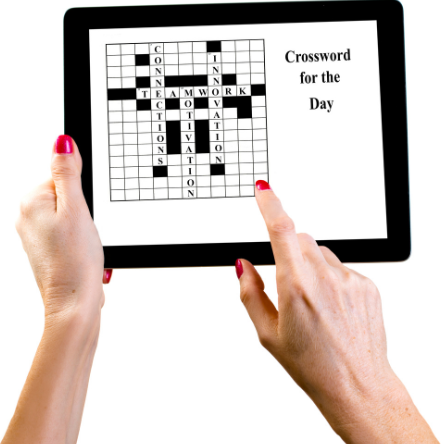
The transition of crossword puzzles from print to pixels has transformed the way you engage with this intellectual pastime. The New York Times crossword, a reflection of crosswords’ rich history, now often features in digital form, complete with interactive grids that interact seamlessly with your clicks and taps. Puzzles that were once diamond-shaped or constrained by black square symmetries are now available in a multitude of variations on the internet, from the cryptic to the anagram-based challenges.
The ease of online publishing has not only allowed traditional wordplay to persevere but has also fostered new communities around these brain teasers. With online versions, you can enjoy theme-based puzzles or explore the nuanced interlock of white squares from anywhere.
Crosswords Today: A Worldwide Phenomenon

Crossword puzzles have become a beloved pastime for millions of people around the world. They have transcended borders, captivating minds in various countries and cultures. Each region puts its unique spin on the puzzle, offering a rich tapestry of linguistic and cultural references.
Did You Know?
- Simon & Schuster, founded by Richard Simon and Lincoln Schuster, published the first book form of crossword puzzles, leveraging the burgeoning crossword craze to their advantage.
- Crossword enthusiasts have included notable figures such as Stephen Sondheim and Jon Stewart, who found solace in the utterly futile finding of words.
- The world greeted the first crossword puzzle book on Christmas, triggering an increased demand, which evolved into the daily work of puzzling people across the world.
- The New York Public Library faced a dilemma, known as the “doubt of the library,” as fans swarmed in, seeking fun facts to solve tricky clues, like those involving the fibre of the gomuti palm.
FAQs
Curious minds often have burning questions about crossword puzzles. Here are some of the most frequently asked questions along with their answers:
Who invented the first crossword puzzle?
The credit for inventing the first modern crossword puzzle goes to Arthur Wynne, who published it in the “New York World” newspaper on December 21, 1913. The puzzle was initially called a “Word-Cross” and featured a diamond-shaped grid with simple clues.
Are there any strategies or tips for solving crossword puzzles?

Absolutely! Here are a few tips to enhance your crossword puzzle-solving skills:
– Approach with easier clues to secure quick wins and self-assurance.
– Leverage crossing words to aid in deciphering tougher clues.
– Observe punctuation in clues, such as question marks, hinting at puns or wordplay.
– Read each clue thoroughly; they may include deceptive language.
– Remember, skipping a troublesome clue and revisiting it can prove helpful.
Are there different types of crossword puzzles?
Yes, crossword puzzles come in various types to cater to different solving preferences. Some popular types include:
Cryptic Crosswords: These puzzles have clues that involve wordplay, anagrams, and other cryptic devices, often requiring a deeper level of thinking.
Themed Crosswords: These puzzles revolve around a specific topic, with clues and answers related to the theme.
Variety Puzzles: These puzzles mix things up by incorporating different types of word games and puzzles within the crossword grid.
Daily/Mini Crosswords: These are smaller-sized crosswords that are quick to solve and perfect for a daily dose of puzzling.
Conclusion
As we conclude our journey through crossword puzzles history, it’s apparent that these seemingly simple grids filled with letters hold a profound cultural and intellectual significance.
The evolution of crossword puzzles from their early origins to the digital age is a testament to their enduring appeal. They have come a long way, overcoming controversies and adapting to the changing times. Yet, at their core, crossword puzzles remain a source of joy, entertainment, and mental stimulation.
Crossword puzzles engage our minds, sharpen our vocabulary, and foster a love for wordplay. They provide a momentary escape from the mundane, a chance to challenge ourselves and tap into our problem-solving skills.
So, whether you’re a seasoned solver or a curious beginner, I encourage you to embrace the joy of crossword puzzles. Explore the richness of crossword puzzle history, challenge yourself with new types and themes, and connect with fellow puzzle enthusiasts. Let these enigmatic grids ignite your passion for words and unravel the mysteries they hold.
Stay curious, keep those pencils sharp, and let the adventure of crossword puzzles unfold before you.
Happy puzzling!
Do you enjoy crossword puzzles? Do you have any tips to solving them? Please comment below.

